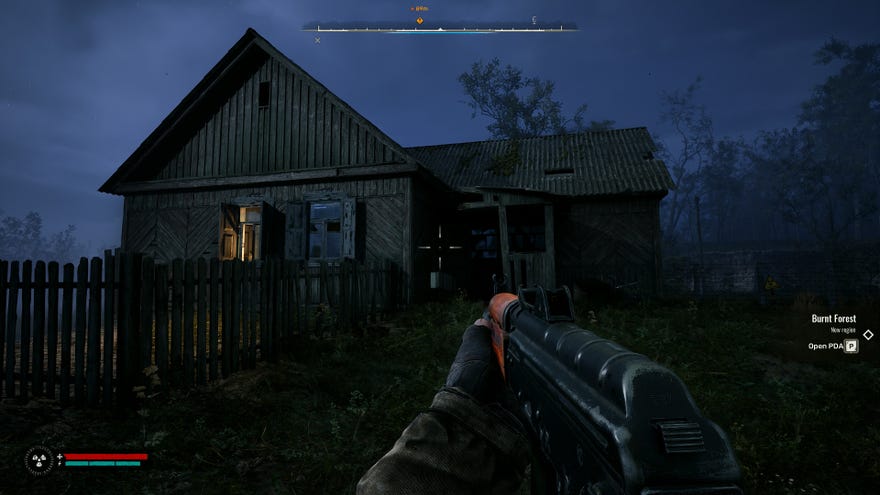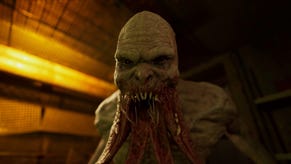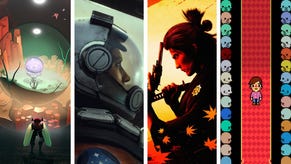How S.T.A.L.K.E.R. 2 moves the series forward – and why it reflects Ukraine’s "rebellious" spirit
A play and a chat with GSC Game World
Oh, S.T.A.L.K.E.R. 2: Heart of Chornobyl. Mere weeks from release after years of delays, plopped in front of me at a cramped, lightly vibrating Gamescom booth, and you still won’t reveal your secrets. I did get to play a brief whizz through GSC Game World’s eerie FPS – enough to feel encouraged, even – but be it time constraints or the darkness of my nighttime raid into the radioactive Zone, I would have liked to have quite literally seen more.
Then again, keeping the mystery intact may have been the point all along. "As a game director, I want to hide everything from the player", GSC’s CEO Ievgen Grygorovych had told me minutes earlier. "I'm fighting with the marketing team because they want to show as much as possible!"
Grygorovych seems to have won this latest round: after a cutscene has me driven into the Zone by a helpful nerd, the demo barely gives me time to investigate a wrecked outpost, flick bolts into some classic S.T.A.L.K.E.R. anomalies, and dump AK rounds into a snarling mutant before a roving bandit gang puts me down. Not exactly an illuminating safari through Heart of Chornobyl’s open world. And yet, there are glimpses here of what this sequel is trying to achieve. For one thing, and while I can scarcely believe I’m saying this about a S.T.A.L.K.E.R. game, there’s a noticeable absence of jank.
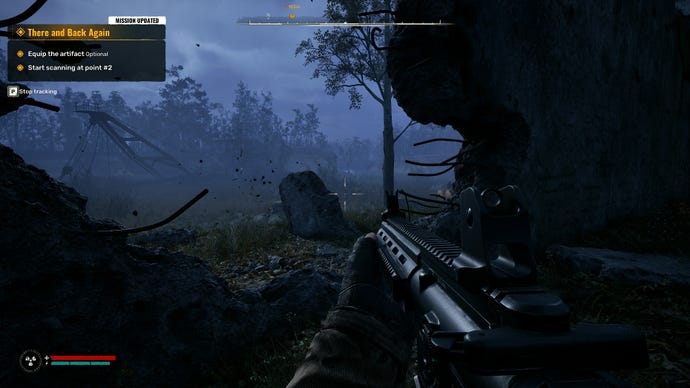
My Stalker moves heavily, but not clumsily. Weapons have a ferocious, meaty kick, but don’t handle awkwardly in the slightest. Even inventory management, which maintains a version of the series’ grid-based system, is snappy and intuitive.
That’s not to say that this is S.T.A.L.K.E.R. with the edges sanded off. There’s little of the narrative or UI handholding that modern shooters are so fond of, and my encounter with the bandits shows how quickly this place will kill the rushing or inattentive. But it’s polished, for sure, and generally does feel like a modern FPS. Fifteen years since the original trilogy concluded, is that a natural product of its environment, or more specifically an olive branch to the series newcomers that will have taken up games in the interim?
"Our first goal", says Grygorovych, "was to make the game for players that don't know anything about the first games. We understood that we will have a huge part of new players, and we want to make the game good for them.
"Old players will see connections – like with some characters, S.T.A.L.K.E.R.: Shadow of Chernobyl players will say 'Oh, I know this character!'. So they will have a deeper and more interesting experience, but [playing previous games] is not necessary to play S.T.A.L.K.E.R. 2.
"Also, we are reaching for the console audience and the Game Pass audience, which will be huge. We are totally aiming for the new players. And we knew from the start that this was our goal."
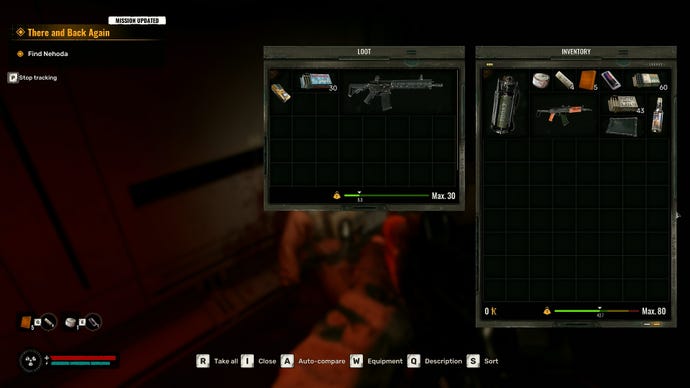
This kind of thinking might understandably set off alarm bells for fans of what has always been a fiercely idiosyncratic series, especially one where weirdness and unpleasantness are practically USPs. Rarely has a game sought a wider audience by knowingly being unwelcoming. Again, though, even my brief demo suggests that the signature atmosphere will survive intact. There’s no music as I break into the Zone via a creaking old tunnel or skulk through the grass towards that outpost; the soundtrack is footsteps and crickets in the darkness, being all the more spooky for it. And when I’m set upon by a Bloodsucker – the same kind of fleshmawed, cloaking ambush predator that plagued previous games – it happens suddenly and violently, without any cheesy cinematic intro to announce him. It plays more smoothly, sure, but it’s still recognisably S.T.A.L.K.E.R..
According to Grygorovych, the series’ distinct tone and friction still form the foundation of the sequel, even if mechanical changes are applied on top of it. If anything, he’s more concerned that those same newcomers GSC are courting might be put off by its quirks.
"We’re building a new game on the legacy we have", he explains. "It’s hard to find something to compare [to the original games]. You can’t find a game that S.T.A.L.K.E.R. is similar to, because it’s unique. It’s not been copied by anyone in its design and scale. But it is a good start point to bring new, modern design parts for S.T.A.L.K.E.R. 2.
"So the game, for me, is unique, and maybe some players wouldn't laugh because it's different from what they play each day! But I guess it's good to have more unique games that are different from others."

Where S.T.A.L.K.E.R. 2 is definitely unique is the circumstances of its development. Despite a promising preproduction, which Grygorovych describes as "the best moment" of the process for the creative freedom it afforded, years of reworks and delays would follow – and then, Russia’s invasion of Ukraine in 2022. For the Kyiv-based GSC, this meant a hasty relocation to Prague, direct attacks on the game by suspected Russian hackers, and outright tragedy when game designer and Armed Forces of Ukraine volunteer Volodymyr Yezhov was killed defending the besieged city of Bakhmut.
Among GSC’s responses was the decision to effectively remove the Russian language from the game; everything from dialogue to road signs would, unlike in the original trilogy, use Ukrainian. (My demo began with the option to play either with English subtitles, or a fully English replacement voiceover; I chose the former and, having heard the latter in subsequent B-roll, would recommend the same.) Still, S.T.A.L.K.E.R. 2 is not an anti-war game – Grygorovych and the rest of GSC simply wanted rid.
"There was nothing like… we put something in the game because of the war", he says. "It was more like we didn't want to have something in the game, and we just put it away. Not injecting something new. But yeah, we removed the Russian, we didn’t want to see it in the game."
"An important bit of context here", adds GSC’s PR manager Zakhar Bocharov, "is that for Ukraine, the war started in 2014, with the annexation of Crimea and the proxy war by Russia in Donetsk and Luhansk. So all the people working on the game, for them, it's a long-going war, which became a full fledged war in 2022. So the influence... I guess it’s what Ievgen says, that it influences the people creating the game, but not the game itself. So they're bringing something or bringing something out.
"I guess that's been going for quite some time already."
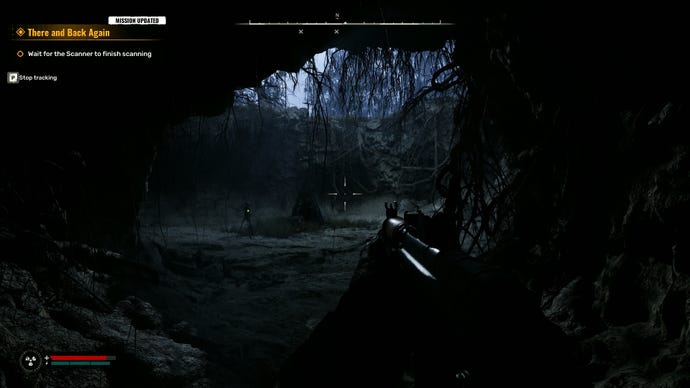
There will, however, be at least some additions that might not have made it in but for the war. Instead of going on the attack, GSC have – within the limits of what makes sense for a grim shooter – looked to celebrate Ukraine in S.T.A.L.K.E.R. 2, such as with mosaics highlighting Ukrainian culture. Grygorovych and Bocharov agree this had to be approached "naturally", though suggest that it’s also natural to have a little national pride.
As Grygorovych puts it: "We, as Ukrainians, have our own identity. We identify ourselves as Ukrainians. We have a totally different story and identity than other countries around us, and for us. Historically, we’ve been a very rebellious nation, with a lot of revolutions, and those revolutions were mostly moved by the will to be free, and to get more freedom.
"First it was against the Polish Commonwealth with Lithuania, and then it was against Russia occupying Ukrainian territories, and even in the modern age it’s continuing. We had two revolutions since the USSR was destroyed. It’s definitely in our code.”
In hindsight, it’s possible to see that yearning for liberty in the very first S.T.A.L.K.E.R, with its lone hero pitched against an ex-Soviet plot to develop global mind control. Will Heart of Chornobyl – and yes, that is the Ukrainian spelling – prove a worthy successor? That depends on how well it pulls off that balancing act, marrying classic S.T.A.L.K.E.R. tension and brutality with modern polish and slickness. I think it has a decent shot, but to be sure... well, I’d need to see more of it.
